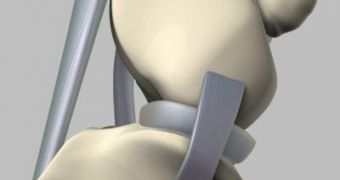At this point, replacing joints or hips in humans and their canine friends is a fairly complex procedure, and not because of the risks associated with the procedure itself, but on account of the fact that repeating this surgery can leave patients with life-long disabilities. And numerous procedures are necessary, because the plastic and metal prostheses that are used these days fail within the human body, despite their sturdy look. Now, experts at the University of Missouri and the University of Columbia are working on a new method of replacing hips and joints, by using living tissue rather than artificial materials.
Placing a metal or plastic device inside the human body does have immediate benefits in terms of improved quality of life and more mobility. But these prosthetic devices, regardless of their quality, cannot endure in the human body for many years. The chemicals at work inside each and every one of us see to it that any intruding objects are eliminated in the end. That is to say, even glass that enters the human body is absorbed within the organism in a few weeks, despite being cooked at 1,300°C Celsius.
“A living biological implant may serve as a more permanent clinical option for joint replacement than existing commercial implants of metal and plastic, thereby revolutionizing the field of joint arthroplasty. Each joint has a different architecture and different properties. We can take the basic concept that we developed for the knee and tailor it to help other joints, such as the hip, elbow and shoulder,” Veterinary Medicine and Surgery Professor James Cook, who is also the Kathryn E. Allen Distinguished professor in orthopedic surgery, explains.
Thanks to a $3.1 million grant received from the National Institutes of Health, the two universities will now be able to better focus their research efforts on replacing the obsolete materials with new ones. “Future replacement parts will require the use of composite structures that can mimic the anatomic properties of bone and cartilage. We are collaborating with material scientists at Missouri University of Science and Technology to come up with suitable bone substitute materials for tissue-engineering applications,” MU School of Medicine Associate Professor of Orthopedic Surgery Sonny Bal adds.

 14 DAY TRIAL //
14 DAY TRIAL //